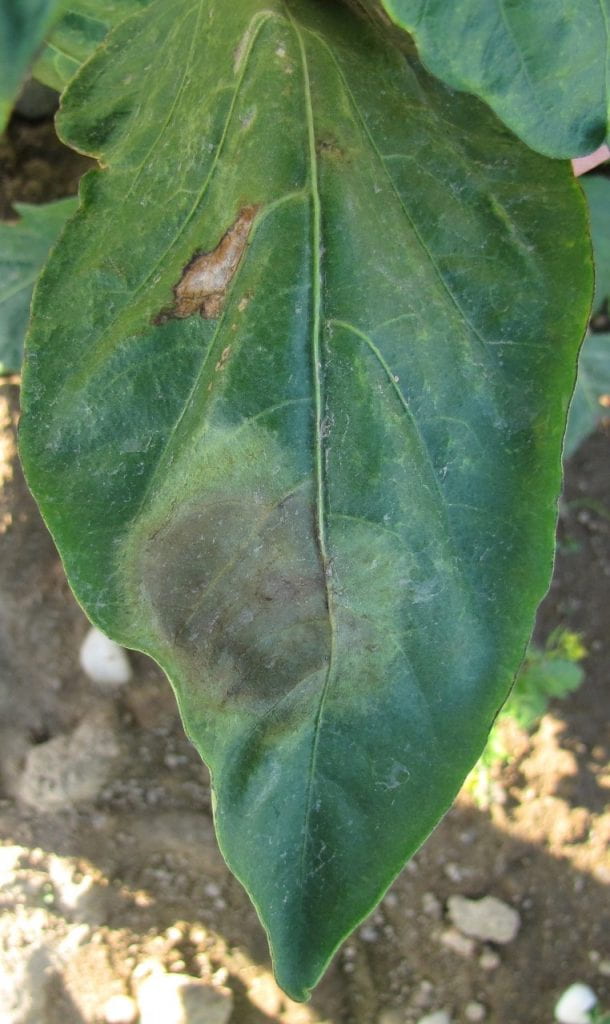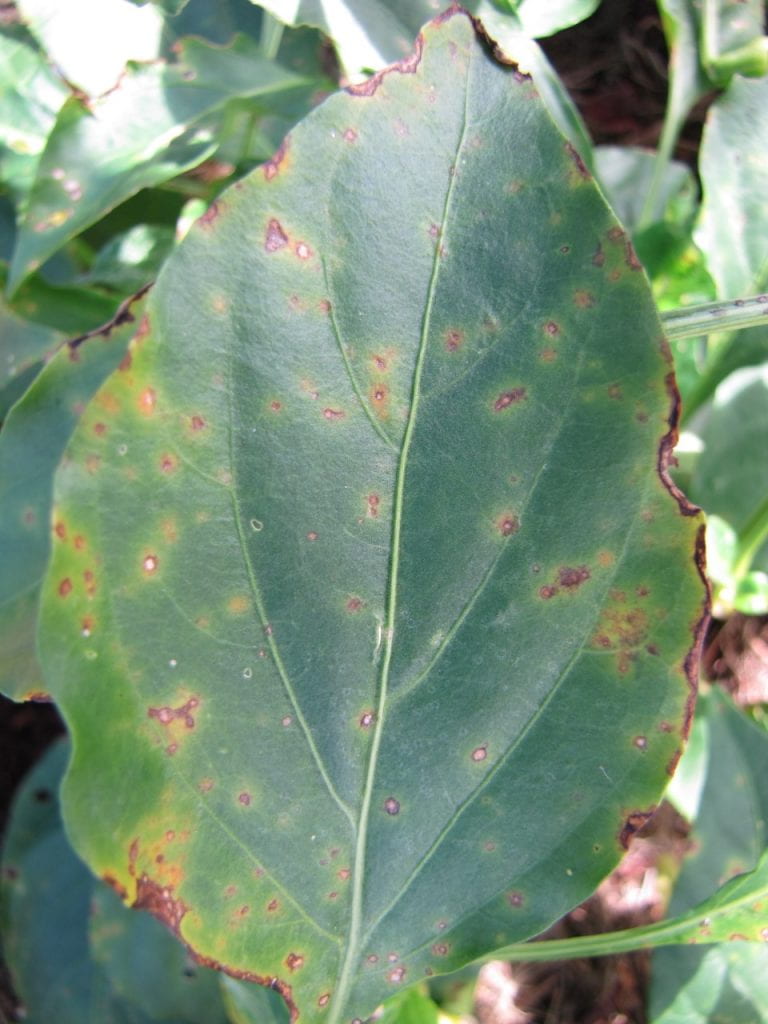Phytophthora blight is among the most destructive and common diseases of vegetable crops in the Northeast. Achieving adequate control necessitates using an integrated management program that includes cultural practices to improve soil drainage, fungicides applied preventively, and resistant varieties when available. Several fungicides are now registered for this disease that have targeted activity for Phytophthora and related pathogens (the Oomycetes). While they have good activity, fungicides alone are often inadequate when conditions are very favorable for disease development, such as following an intensive rainfall. If predictions of more intensive rainfalls due to climate change are correct, then conditions are expected to become more favorable. Therefore, blight-resistant varieties will increase in importance for the fact that variety selection is the first, effective defense growers can integrate into a production system and fungicides alone can be insufficient during a rainy season. Another webpage has additional information about Phytophthora blight, its management, plus images of symptoms.
Bacterial leaf spot is another important disease of pepper on Long Island, and resistant varieties are also an important management practice for this disease. Dark brown spots develop on leaves, causing premature senescence, and also on fruit and stems. Other management practices include pathogen-free seed (hot water is an effective treatment), disinfecting greenhouse surfaces and planting materials that will be re-used, 2-yr crop rotation, applying streptomycin to seedlings in the greenhouse, and applying copper and biopesticides. Copper is not inherently highly effective compared with modern fungicides for fungal diseases, most products have 48 hr REI, and bacteria can develop resistance to copper, thus resistant varieties are especially important for managing bacterial leaf spot. Copper resistance has not been examined for isolates of this pathogen occurring on Long Island, but it has been confirmed in New Jersey. Another important fact about this pathogen pertinent to successful management is its ability to develop new races able to overcome resistant varieties. All 11 currently known races have been detected in New Jersey. Varieties with X10R® technology are resistant to all races. Another webpage has additional information about bacterial leaf spot, its management, plus images of symptoms.
Bell pepper varieties resistant to Phytophthora blight and to bacterial leaf spot races 0-10:
- Nitro S10. Large blocky red bell; smooth fruit. Also has high resistance to Tobacco Mosaic Virus (TMV) and intermediate resistance to Tomato Spotted Wilt Virus (TSWV).
- Sailfish. Early blocky red bell; smooth fruit. Also resistant to Tobacco Mosaic Virus (TMV).
- SVPB9386. Early red bell. Similar to Red Knight with larger fruit and better yielding.
- Tarpon. Main-season hybrid with compact plant and dark green, smooth blocky fruit. Also resistant to tobamoviruses.
Bell pepper varieties resistant to Phytophthora blight and some bacterial leaf spot (BLS) races:
- Intruder. Large, firm, smooth fruit. Resistant to BLS races 1,2,3.
- Mercer. Mid to early red bell; large, smooth fruit. Resistant to BLS races 0‐3,7,8 and to Tobacco Mosaic Virus (TMV). Intermediate resistance to Tomato Spotted Wilt Virus (TSWV).
- Remarkabelle. Blocky red bell. Resistant to BLS races 1-3,7,8.
- Revolution. Early blocky red bell. Resistant to BLS races 1,2,3,5 and to Cucumber Mosaic Virus.
- Turnpike. Blocky red bell. Resistant to BLS races 0-5, 7-9 and to tobamoviruses.
Jalapeno pepper varieties resistant to Phytophthora blight include Legendario and Tzotzil. Tzotzil produces large to extra large fruit that mature red with thick fruit walls.
Paladin was the first pepper variety with good level of resistance to Phytophthora blight, but it is not resistance to BLS and its fruit are prone to silvering, a physiological disorder.


More information/prepared by:
Margaret Tuttle McGrath
Associate Professor
Long Island Horticultural Research and Extension Center (LIHREC)
Plant Pathology and Plant-Microbe Biology Section
School of Integrative Plant Science
College of Agriculture and Life Sciences
Cornell University


